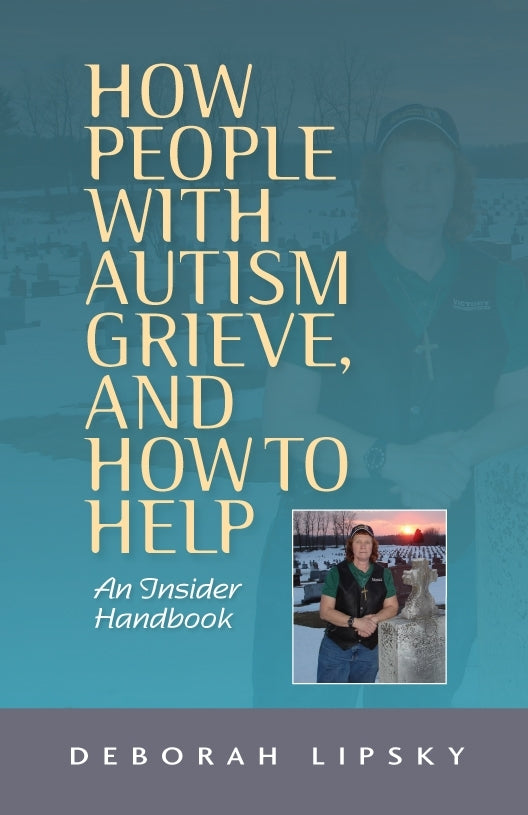
Press Reviews
Autism eye
Lipsky uses personal experience and case studies to explore how people with autism feel and express the loss of a loved one, and how they process and come to terms with their feelings of grief…...She offers advice to parents and carers on how to prepare someone with autism for the bad news.
Midwest Book Review
A fine survey on how people with autism handle loss of people in their lives, and explores how they come to terms with grief. From various coping behaviors such as turning to solitude over sharing feelings to their ability to show no emotional turmoil and to turn their focus to other things, this explains the different reactions of autistic people to their environment and experiences, and comes from a high-functioning autistic individual with a basic background in emergency services and education alike.
Liane Holliday-Willey, author of Safety Skills for Females with Asperger Syndrome, Pretending to be Normal, Asperger Syndrome in the Family, and Asperger Syndrome in Adolescence
My Aspie father never showed an ounce of emotional turmoil, not when he talked about being on the front line in WWII, not when he talked about his beloved parents' deaths, not when he talked about the Great Depression. He offered reasons for why these events occurred, insight into how to move beyond the obvious holes they left, and advice meant to prepare for future inevitable tragedies. Most marked my father as a cold and unfeeling man, but Deborah Lipsky's understanding of the way many with autism handle grief, show my father to be a man who simply processes loss and sadness in a different way, not in a lesser or insignificant way. Just as this book explains how some with autism respond to grief, it also expresses how most of society does grieve. Sharing the points of view will help people on and not on the spectrum learn to respect individual reactions to the things that fill life with woe.
Library Journal
Lipsky, an autistic woman who has worked as a firefighter, emergency medical technician, and reserve police officer, is the author of two other similar titles: Managing Meltdowns and From Anxiety to Meltdowns. She expertly brings the disability motto "Nothing about us without us" to life in this behind-the-spectrum perspective of death and grieving. Lipsky discusses how autistic people view the end of life, which entails literal thinking and problem solving that are not in step with our (neurotypical) emotional responses. Her matter-of-fact approach and examples shine a light on just how different the process is for those on the spectrum. Strategies surrounding cultural expectations for wakes, funerals, and other social events are included. VERDICT An eye-opening work that is truly illuminating and thought-provoking. Essential for anyone who loves, lives with, or works with people on the spectrum, and highly recommended reading for those in the mortuary, counseling, and education fields.
Side by Side
This book is a good insider guide and gave me a better understanding about how people with autism cope with grief and loss. The gap between ASD and NT reaction to grief remains but hopefully it will enable those that are seeking support to begin bridging the gap.
